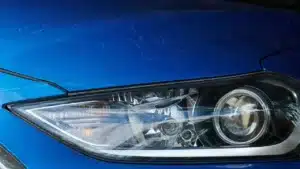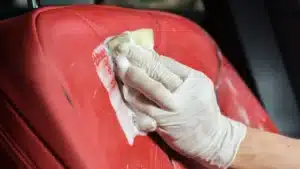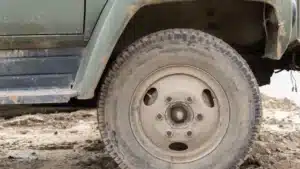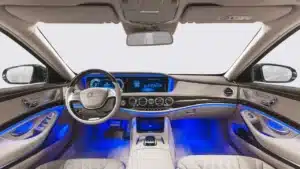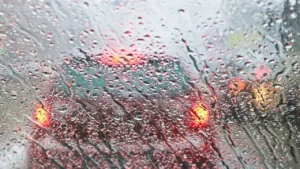A car’s resale value is largely influenced by its appearance. Research has shown that a vehicle with faded paint can lose up to 20% of its value. So, having knowledge of how to restore car paint not only leaves your vehicle shining but also helps retain its value.
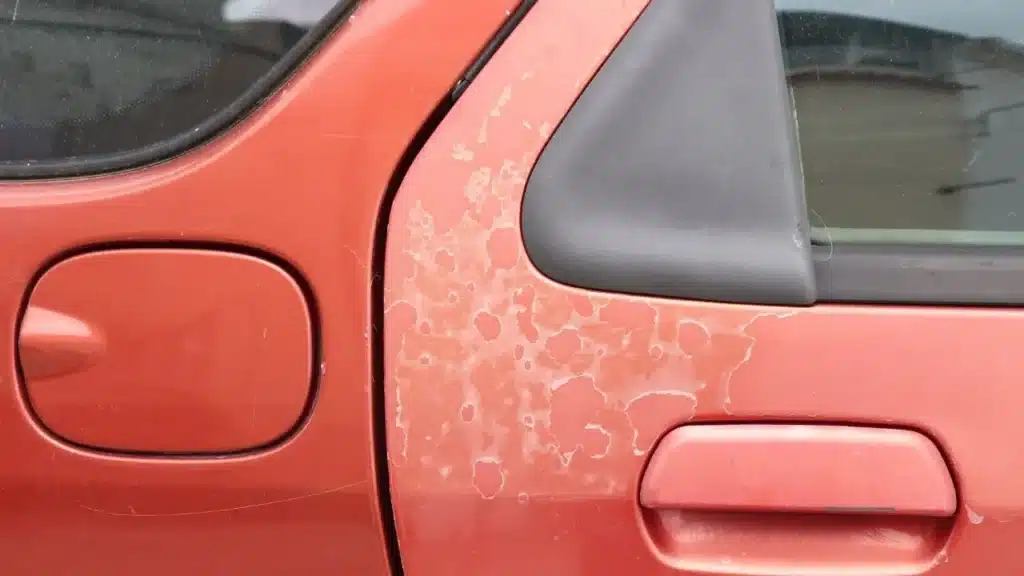
Besides devaluation, a vehicle’s appearance says a whole lot about the driver’s personality. But how does one go about paint restoration without all the fancy detailing tools professionals use?
Well, contrary to the popular belief that you need expensive detailing tools for paint restoration, the task can also be done by hand. Stay with us as we show you how to restore your car paint in five simple steps using only polishing pads.
How to Restore Faded or Oxidized Car Paints
Before attempting to restore faded car paint, check the condition of the paint. While it is possible to restore faded or heavily oxidized paint, once it fades to the bare metal underneath, paint restoration is no longer an option.
The process of restoring a vehicle’s paint can be broken down into three stages, including decontamination, correction, and protecting the restored finish. Below are all the products you’ll need when restoring the faded or heavily oxidized paint:
- Automotive Wash Soap
- Microfiber Wash Mitt
- Microfiber Towel
- Clay Bar and Detail Spray
- Meguiar’s Ultimate Compound Bundle
- Meguiar’s Ultimate Polish
- Advanced Graphene Ceramic Coating
Step 1: Start by Washing the Car
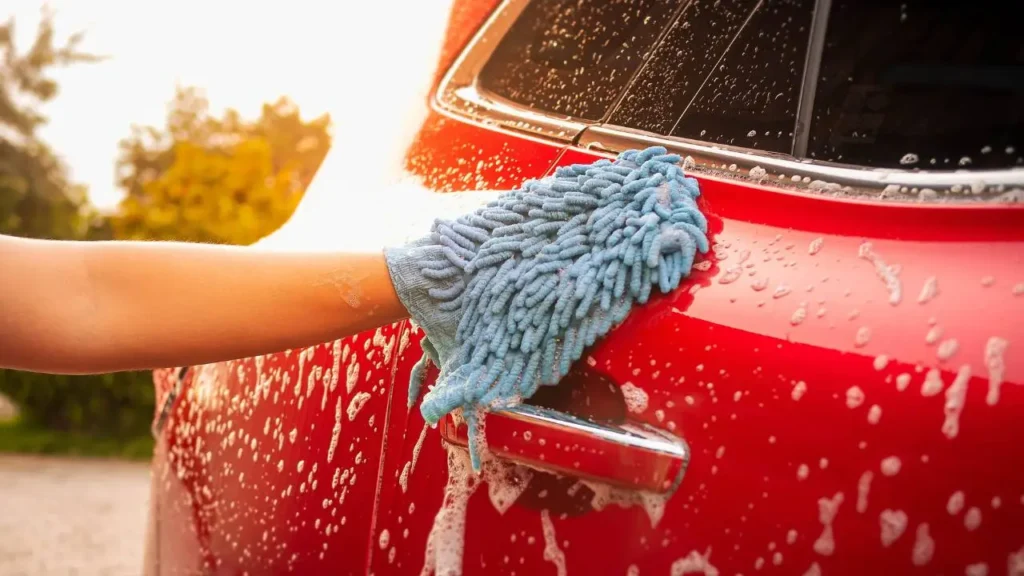
Before you do anything, the first step is to clean the car. Wash the vehicle to remove any dirt, debris, and contaminants from the surface so that when you start the paint correction process, you’ll have clean bare paint.
Start by rinsing the vehicle to wash off the caked-up soil on the car. Next, pre-soak the vehicle with the automotive wash soap using a foam cannon or by hand. Leave the lather on for some minutes before rinsing to soften all the contaminants.
After rinsing off the lather, get your microfiber wash mitt and proceed to wash the car by hand. Use the two-bucket wash method and work from the top to the bottom to minimize the risk of scratching the paint.
Avoid using excess pressure when scrubbing. Instead, leave the wash mitt to do the work. And when washing, work in segments rinsing off the soap and loose dirt before moving to other parts.
If you’ll be using a pressure washer, stay at a safe distance from the vehicle and set the washer to low pressure to avoid damaging the paint. After washing, dry the car with your microfiber towel, and your paint is ready for decontamination.
Step 2: Use Clay Bar to Remove Bonded Contamination
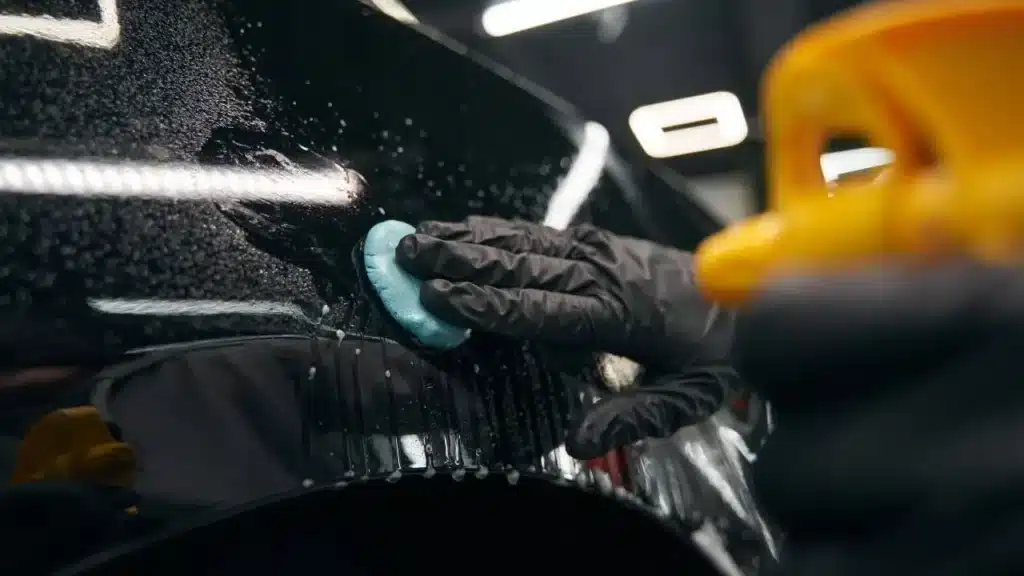
Before you proceed to the clay bar treatment, run your fingertips through the paint to check for bonded contaminants embedded in the clear coat. If you feel little bumps on the paint surface, it has contaminants.
Suppose there aren’t any contaminants, you can skip this process. But when dealing with paint oxidation, there is an increased chance of micro dirt and other contaminants stuck to the clear coat.
Get your detailing clay and stretch it out into a sizeable disc. Then, lubricate the surface using the detail spray and start claying the paint. While at it, work in segments and only use linear motions going back and forth or from left to right.
Once you are done with a segment, wipe it clean with your microfiber towel and move to another. Repeat the process until you are done with the whole exterior.
Always remember to spray on some detail spray from time to time to keep the surface well-lubricated. And whenever you feel the clay bar has gathered contaminants, remold it to get a fresh bar.
Step 3: Compound Treatment

Once you are done ridding the clearcoat of contaminants, the next step is paint restoration. Start by applying the rubbing compound to remove all the light scratches, watermarks, oxidation, and other imperfections on the paint.
The cutting polish has large-sized abrasives particles that help to smoothen out severe scratches and remove paint imperfections. But before you start the treatment, park your car in a shaded area or a garage to avoid direct sunlight.
Now, get your applicator pad and apply a small amount of the rubbing compound onto the pad. While you might be tempted to use a microfiber towel, the towel will absorb too much of the compound, thereby impeding the efficiency of the compound.
Using a circular motion, spread the compound and buff it into the paint while applying medium pressure. After buffing in the compound, wipe off the excess using a clean microfiber towel.
Wiping off the excess compound will reveal an improved and shining paint finish. And like the clay bar treatment, work in segments and only move on to another segment once you are done with one.
Continue working in small sections until you have treated the entire car, and change the applicator pad or microfiber once they absorb too much of the compound.
Usually, the outcome from the compound treatment alone always looks good. However, you want to follow up with a polishing compound to make it look even better. And then with paint protection treatment to shield the clear coat.
Step 4: Polishing
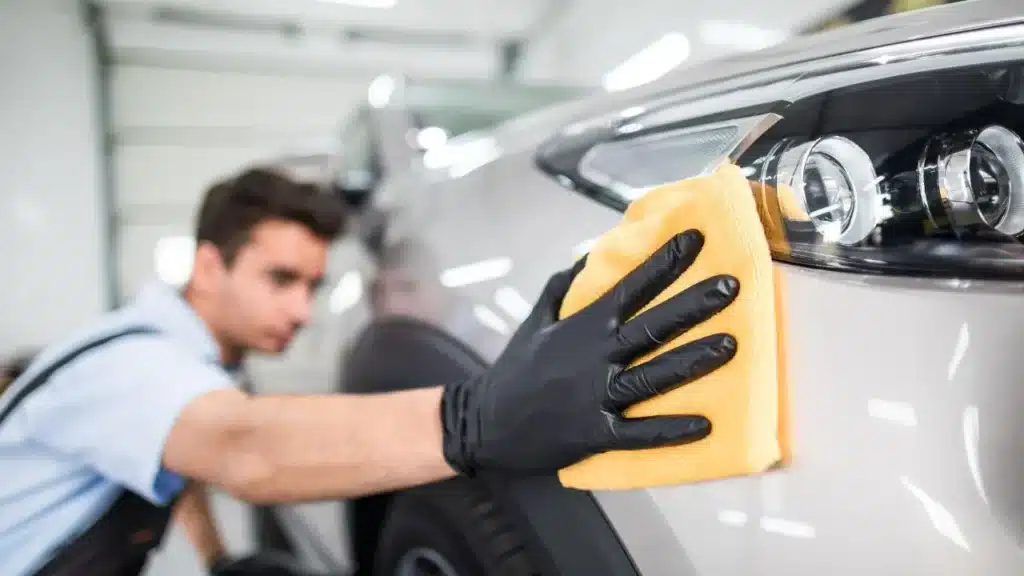
The next step in the car paint restoration process is polishing. Polishing helps to improve the paint’s shine and also gets rid of minute imperfections.
However, since the polishing compound is less abrasive, it is not powerful enough to cut through heavy imperfections. When dealing with faded car paint, you want to apply the buffing compound before polishing to remove surface imperfections.
Get a fresh applicator pad and apply the polishing compound on the pad. Similar to what you did with the compound treatment, spread the polish on the paint. Then, proceed to buff in the polish using medium pressure.
Next, wipe off the excess polish with a fresh microfiber towel. When polishing, work in small portions and only move to another section once you are done. Advance in this manner until you are done polishing the whole exterior.
You should also avoid polishing a spot for long and always keep your polishing pad clean. Once you are done polishing, your vehicle is set for the final stage, which is the paint protection.
Step 5: Paint Protection
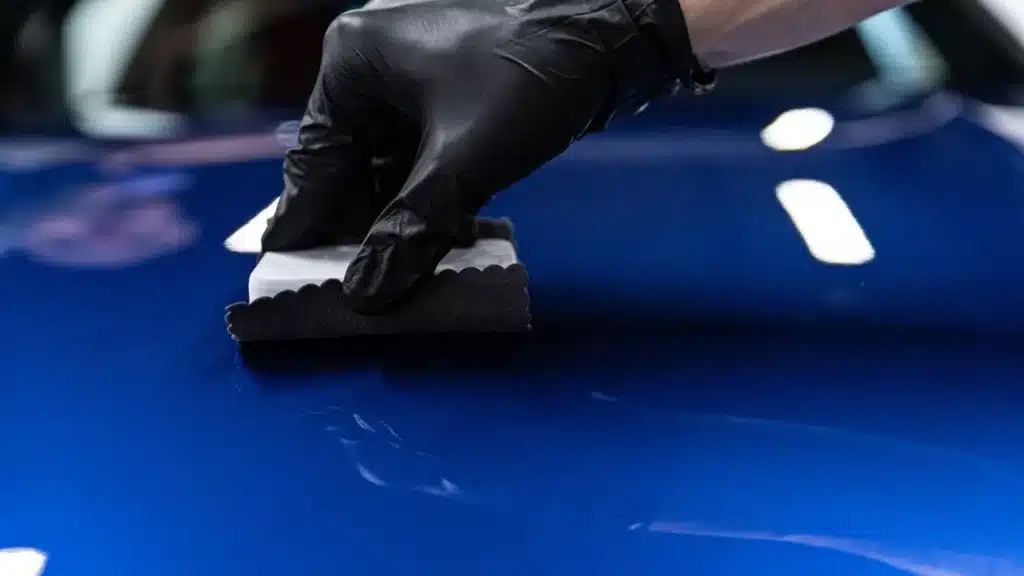
The final step of the car paint restoration is protecting the car paint. We’ll be using ceramic coating for the paint protection (more details for our reason later on). But before you proceed, ensure that your paint finish is free from scratch or swirl marks, as the ceramic coating will not hide them.
Wrap the applicator cloth around the sponge applicator and spray a light coat of the ceramic coating on it. Then proceed to apply a fresh coat evenly across your car’s paint using either a circular motion or a cross-hatch pattern.
Apply the product in small sections and leave the coat on for about a minute or until it starts to develop a streaky appearance. Then wipe off the excess with the polishing rag.
After cleaning off the excess coating, examine the panel for high or low spots and give it another wipe with a different polishing rag to give it a nice, clean, and consistent finish. Now, repeat the process until you’ve completed the entire exterior.
During the process, try not to apply too much of the coating and stay away from direct sunlight. Once you are done with the application, you have to give the coating time to cure.
You don’t want to rush the curing process as it would impact its longevity. While we recommend leaving the vehicle for about 24 hours, ceramic coating takes about seven days to fully cure and you shouldn’t wash the vehicle until it fully cures.
What are the Different Stages of Paint Deterioration?
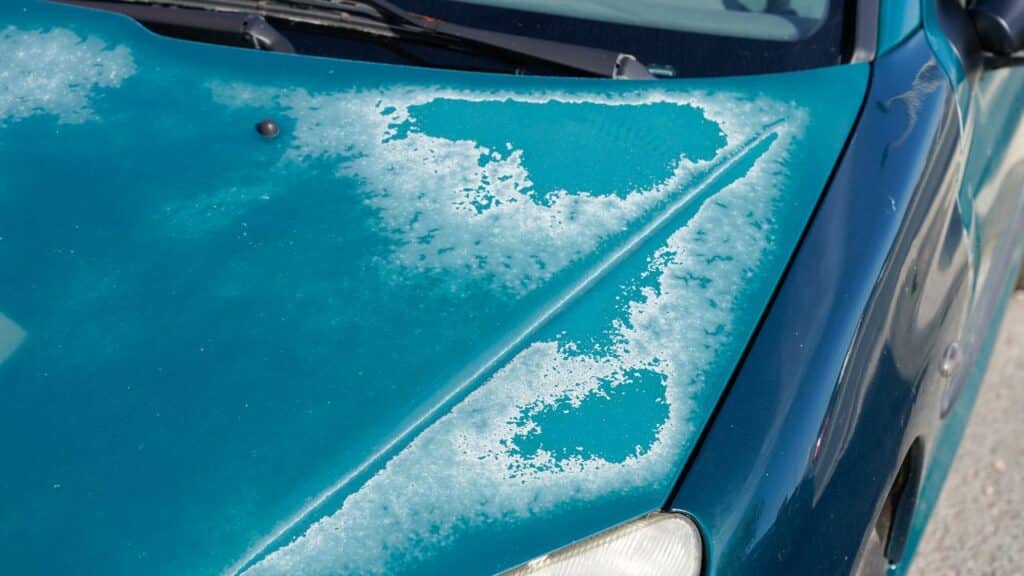
Paint deterioration is a gradual process, with each stage indicating a different level of severity. Below are the different stages of paint deterioration.
1. Oxidation
Oxidation is the first stage of paint deterioration. Paint oxidation is a chemical process that’s triggered by the combination of heat and oxygen. The reaction breaks down the bond of the paint pigment, giving it a faded appearance.
Besides giving the car paint a faded appearance, paint oxidation also causes the paint to lose its protective properties, resulting in a rough and porous surface.
To treat oxidation, give the paint a compound treatment and polish it to restore the gloss finish. And finish off with any wax, sealant, or ceramic coating of your choice.
2. Paint Failure
When an oxidized car paint is left for an extended period, it begins to corrode. The porous surface, as a result of the oxidation, makes the paint more susceptible to dirt, moisture, or other contaminants, leading to the decline of the paint.
You may notice discoloration, bubbles, or in some worst cases, paint peels. These are all pointers that the bond between the clear coat and the color coat has eroded. The only way to salvage the paint job at this stage is to repaint the vehicle.
3. Rust
This is the final and worst stage of paint deterioration. Rust formation is an electrochemical reaction triggered by the oxygen and moisture in the atmosphere. Modern car paints consist of multiple coatings to help prevent rust formation.
However, a deep scratch left for an extended period can still trigger rust formation. The scratch exposes the body panel, allowing moisture and oxygen to penetrate into the bare metal.
And once both elements make contact with the metal, the rusting process is set in motion. So, you should always fix deep scratches, oxidation, or fading promptly before they lead to rust formation.
Suppose you already have rust formation; you need to act fast and prevent it from turning into a rust hole. When dealing with rust, sand down all the rust before repainting. Else the rust will bleed through the paint and rust again.
What are the Common Causes of Deteriorating Car Paint?

Car paints are expected to last for years before they start showing wear signs. However, there are some factors that can accelerate its deterioration, and below are the common causes of premature paint wear.
1. UV Radiation
Exposure to ultraviolet radiation is the leading cause of fading car paint. The rays from sunlight carry energy that sets off a chemical reaction known as oxidization upon contact with the car’s paint.
Oxidization breaks down the chemical bonds in the paint pigments and causes the paint to lose its oil content, resulting in a visibly dull matte appearance. It is a gradual effect, and contrary to popular beliefs that it is caused solely by exposure to sunlight, this is not entirely true.
Instead, oxidation is triggered by a combination of heat and oxygen. And while prolonged exposure to direct sunlight provides the required heat, the heat still needs to react with oxygen for oxidization to be fully set in motion.
Continuous exposure to direct sunlight will ultimately lead to oxidation. And it is even worse with red cars, as they have a low tolerance to ultraviolet rays and are more susceptible to fading.
2. Chemical Exposure
Regular washing is one sure way to keep your car clean and prolong the paint finish. But going about it the wrong way can damage the paint. Washing your car with harsh cleaning agents or solvents strips away the oil in the paint, gradually fading the paint.
Another element that has a similar effect as harsh cleaning agents is road salt. The salt acts as an electrolyte when it comes into contact with metal, causing it to lose electrons and hastening the rusting process.
So, when road salt comes into contact with any part of your body panel, it sets off a chemical reaction. The chemical reaction invariably leads to corrosion, speeding up rust formation on the body panels.
3. Poor Paint Quality
The quality of the paint used for the car can also hasten the speed at which it deteriorates. While single-stage paint is cheaper and less time-consuming than a two stage-paint, the latter provides a more durable transparent finish than a single-stage paint.
And this is because single-stage paint doesn’t have a separate clear coat to shield the color coat, making the paint less resistant to fading. But besides paint quality, poor preparation or insufficient coats can also lead to accelerated fading.
4. Scratches
Paint scratches can also cause premature failure. Scratches destroy the protective layer shielding the car paint, making it susceptible to oxidation and rust. Deep primer scratches often turn out to be the most destructive when dealing with paint scratches.
Primer scratches penetrate deep into the primer coat, exposing the body panel to rust. However, minor paint or clear coat scratches can also trigger rust and oxidation when left unrepaired for an extended period.
So, you should always fix paint scratches promptly before it gets worse. You can check out our detailed article on different types of paint scratches and how to fix them yourself.
How to Prevent Vehicle Paints from Fading
While your car paint is expected to show wear signs after an extended period, there are some measures you can take to prevent this from happening sooner than expected.
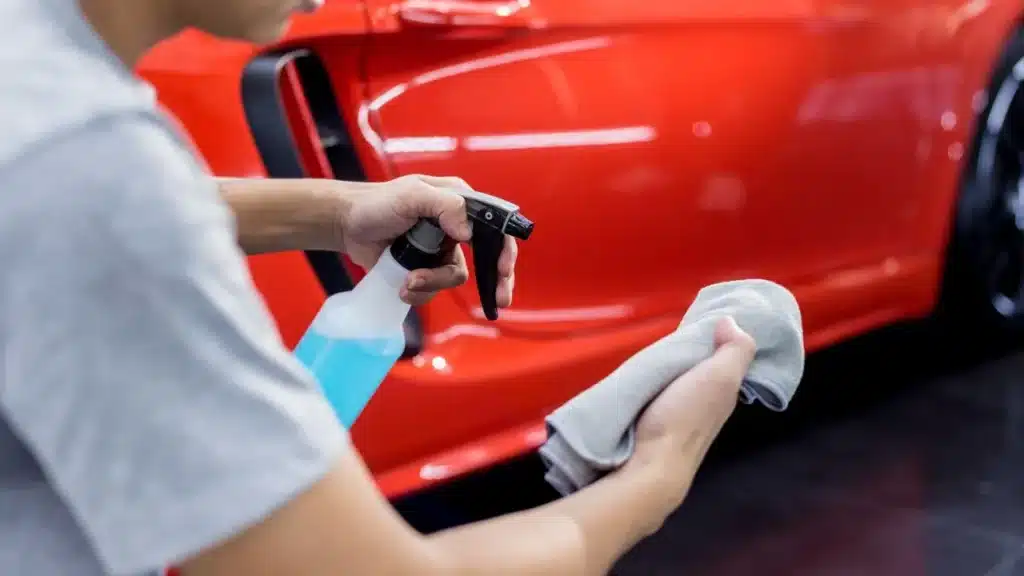
1. Park under a shade or use a car cover
When parking your vehicle, avoid parking under direct sunlight. The ultraviolet radiation from the sun can negatively impact the car paint after long exposure, leaving it with a faded and chalky appearance.
If you are leaving your vehicle for an extended period, make it a habit of parking in the garage to reduce sun damage. And if there are no garages around, use a car cover.
While some drivers may find these measures stressful, it is cheaper than paying professional detailers to fix your fading or oxidized paint.
2. Regular washing
It goes without saying that giving your vehicle proper care keeps it clean and shining. Regular washing helps remove dirt, dust, and other contaminants from the car’s surface.
Clearly, how often you may need to wash your car would depend largely on how and where you use it. But you don’t have to wait for your car to be filthy before washing. As a rule of thumb, wash your car at least once every two weeks.
3. Avoid harsh cleaning agents
You can further preserve your car paint by using only soft or PH-neutral cleaning agents. Harsh or abrasive automotive soap contains higher PH levels and contains more alkalinity. And when used, can damage the protective properties of the paint.
Also, try to use softer materials with safe cleaning techniques when washing your car. This helps prevent scratch marks, swirls, and other damages that would otherwise be caused by employing the wrong cleaning techniques.
4. Use paint protection
Today, car paints have clear coats that shield the color coat. Going the extra length to protect the clear coat from environmental elements will help prolong the lifespan of your paint.
Paint protection is an additional layer of coating that goes over clear coats to prevent damage to the car’s paint. And there is a plethora of protection options to choose from, with each option having distinct benefits.
While they all shield your paint finish, these are all done to varying degrees. For instance, ceramic coatings are bullet-hard and provide superior protection than wax or sealants. But a paint protection film provides better protection but doesn’t look as appealing as ceramic coatings.
5. Avoiding harsh environmental conditions
Harsh environments are known to speed up paint degradation. Your paint is more likely to fade in extreme heat or develop cracks in chilling colds.
Clearly, driving in these climates is sometimes unavoidable. Nonetheless, you can try to minimize the impact of extreme weather conditions by parking in a sheltered area.
However, there are some environmental conditions that are avoidable. For instance, avoid parking near industrial areas with chemical pollutants or driving on gravel roads that can cause rock chips.
Also, clean off bird droppings, tree sap, or other corrosive substances promptly, as they can damage the paint if left untreated.
But regardless of these preventive measures, a vehicle’s paint will deteriorate after an extended period. At this point, you can either employ the services of professional detailers or fix it yourself if you know how to restore car paint.
Which is the Best Type of Protection for Faded Paints, Wax, Sealant, or Ceramic Coating?
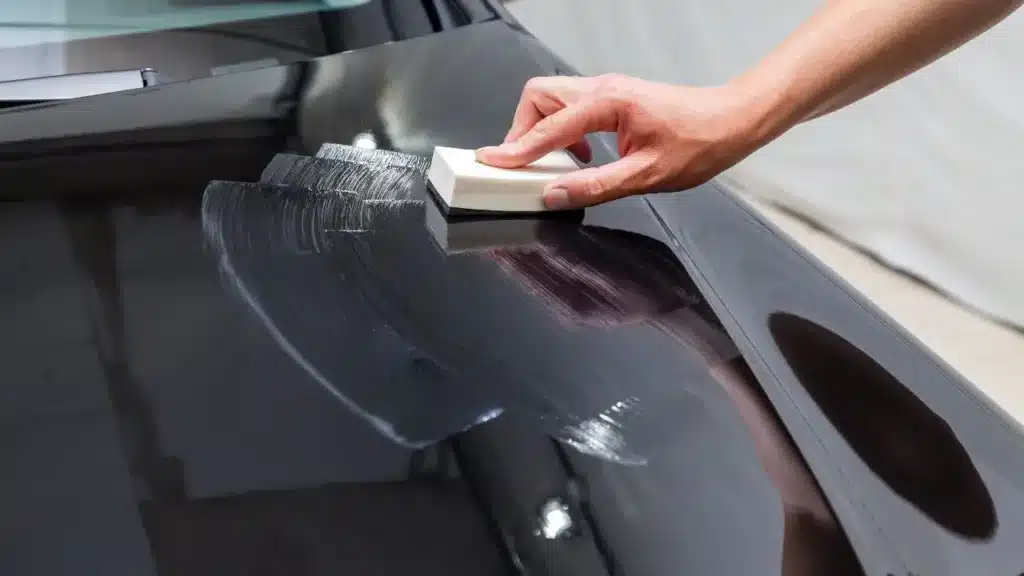
Drivers are often confused as to which paint protection provides the best form of shield. And the reason is not farfetched from the availability of multiple options — from traditional car wax to paint sealants and ceramic coatings.
Below is an examination of the trio of ceramic coating, sealants, and wax and their key differences.
1. Traditional Car Waxes
Car waxes have been around for decades and were the first ever type of paint protection. They are made from organic material, and when applied, they form a thin layer, shielding the paint from clear coat failure.
Besides preventing clear coat failure, they also have hydrophobic properties and give the paint a natural warm glow. Car waxes are simple to apply and available in paste, liquid, or spray form.
The only downside is that they typically last between three months which is relatively short when compared to a sealant or ceramic coating.
2. Paint Sealant
A Paint sealant is a synthetic paint protection that shields the car paint from harsh environmental elements. They also provide a nice glossy finish, and since they are synthetic, they are formulated to last longer, providing about six months of protection.
Paint sealants also have hydrophobic properties, are easy to apply, and are inexpensive, though there are some expensive ones. One downside of a sealant is that it doesn’t give off the same type of warm glow as traditional car wax.
What you get is a synthetic glossy finish. But a way around this is to add a coat of wax after applying the sealant. So, you start with a base layer of the sealant and then finish off with your carnauba paste wax.
3. Ceramic Coating
Ceramic coatings currently offer the highest form of paint protection. They form a thick protective layer over clear coats and are much more chemically resistant than waxes or sealants.
Their thick layer and chemical resistance make them more durable and better at protecting the clear coat, lasting upwards of two to five years. They also have insane hydrophobic properties and deliver an outstanding gloss finish.
Once applied, ceramic coatings are cheap to maintain, as there is no need for frequent reapplication. The drawback of ceramic coating is that it requires some level of experience to apply.
And since a ceramic coating is semi-permanent, you must ensure that your paint is flawless before applying a coat, as it will not hide swirl marks or scratches. Instead, it will seal them in permanently.
| Wax | Paint Sealants | Ceramic Coatings |
| Helps preserve the vehicle’s clearcoat | Decent protection against natural elements | Bulletproof protection against contaminants |
| Gives off a natural warm glow | Gives off a synthetic gloss finish | Gives off a deep glossy finish |
| Provides about three months of protection | Last longer than wax providing about six months of protection | Last the longest, providing upwards of two to five years of protection |
| Has decent hydrophobic properties | Has decent hydrophobic properties | Insane hydrophobic properties |
| Requires frequent application to restore its protective properties | Requires frequent application to restore its protective properties | One application will last for years |
| Easy to apply | Easy to apply | Requires some level of experience |
Clearly, ceramic coatings offer better protection than wax or paint sealants. The thick protective coat formed over the clear coat when applied makes ceramic coating much more resilient and durable than the other two.
And despite their expensive cost and the grueling application process, once the ceramic coat fully cures, they are insanely hydrophobic and far more chemical resistant than wax or paint sealants.
FAQs
Can faded car paint be restored?
Yes, you can fix faded car paint to a certain extent. However, a paint job that has deteriorated to the point of exposing the body panel underneath is beyond restoration. Summarily, the odds are largely dependent on the severity of the wear down.
What is the best way to restore car paint?
Restoring car paint is a three-stage process. It includes decontaminating the paint surface, polishing the paint, and protecting the revitalized car’s paint.
Why do red cars fade faster than other colors?
The pigment used in red paints is less resistant to ultraviolet rays. The increased energy absorption and lower resistance will ultimately result in accelerated fading of the pigment.
Which color is easier to maintain, white or black?
White vehicles are much easier to maintain and keep clean than other colors. They are better at hiding dirt, scratches, water spots, and other imperfections.
Conclusion
Paint restoration is a three-stage operation involving a decontamination, correction, and protection process. But most guides on how to restore car paint require using a machine polisher or some other detailing tools.
Clearly, the average car owner doesn’t have these detailing tools. So, we’ve simplified the process for car owners with a comprehensive guide describing how to restore paint by hand using polishing pads.
The only drawback is that the process takes longer than when using a dual-action polisher. However, a polishing pad also delivers professional results and will restore severely faded paint.
But a paint that has declined to the point of exposing the bare metal underneath cannot be restored. You have a better chance at restoration while the clear coat is still present. Once the clear coat fades off, you’ll need to get a repaint.
Ultimately, using paint protection, regular washing, avoiding harsh chemicals, and limiting sun exposure will help preserve the paint, leaving it vibrant for many years.

